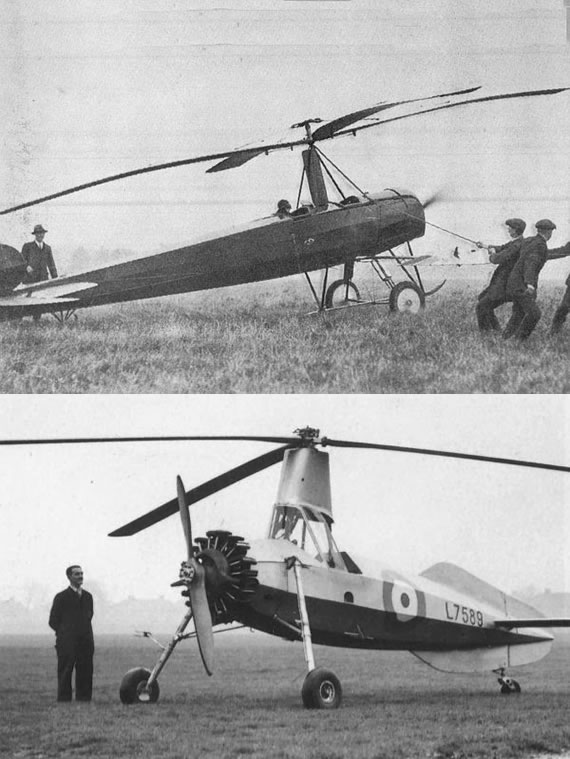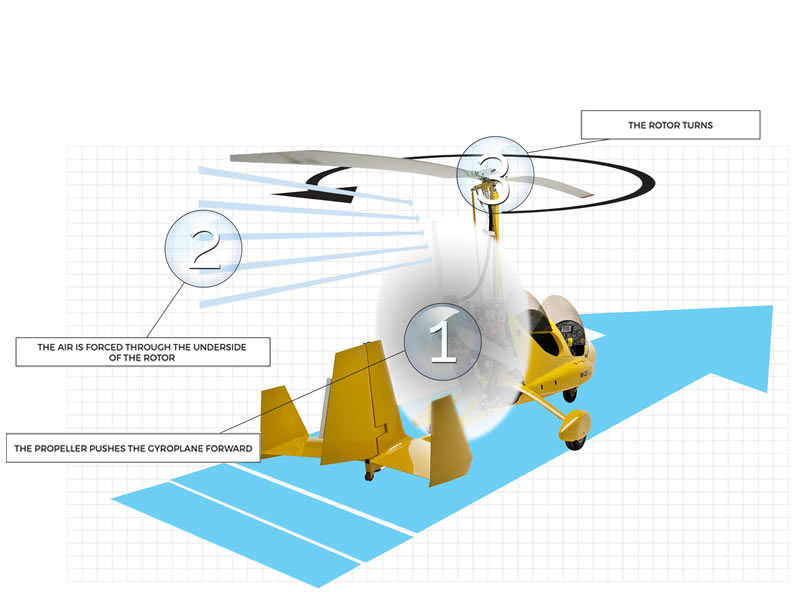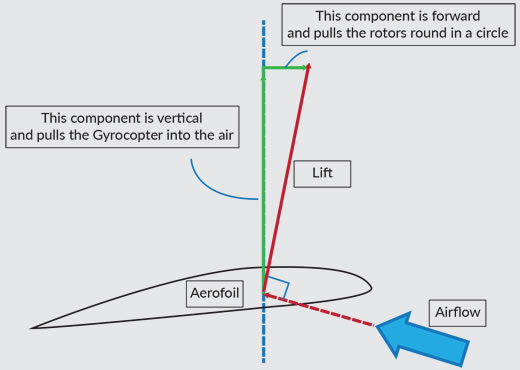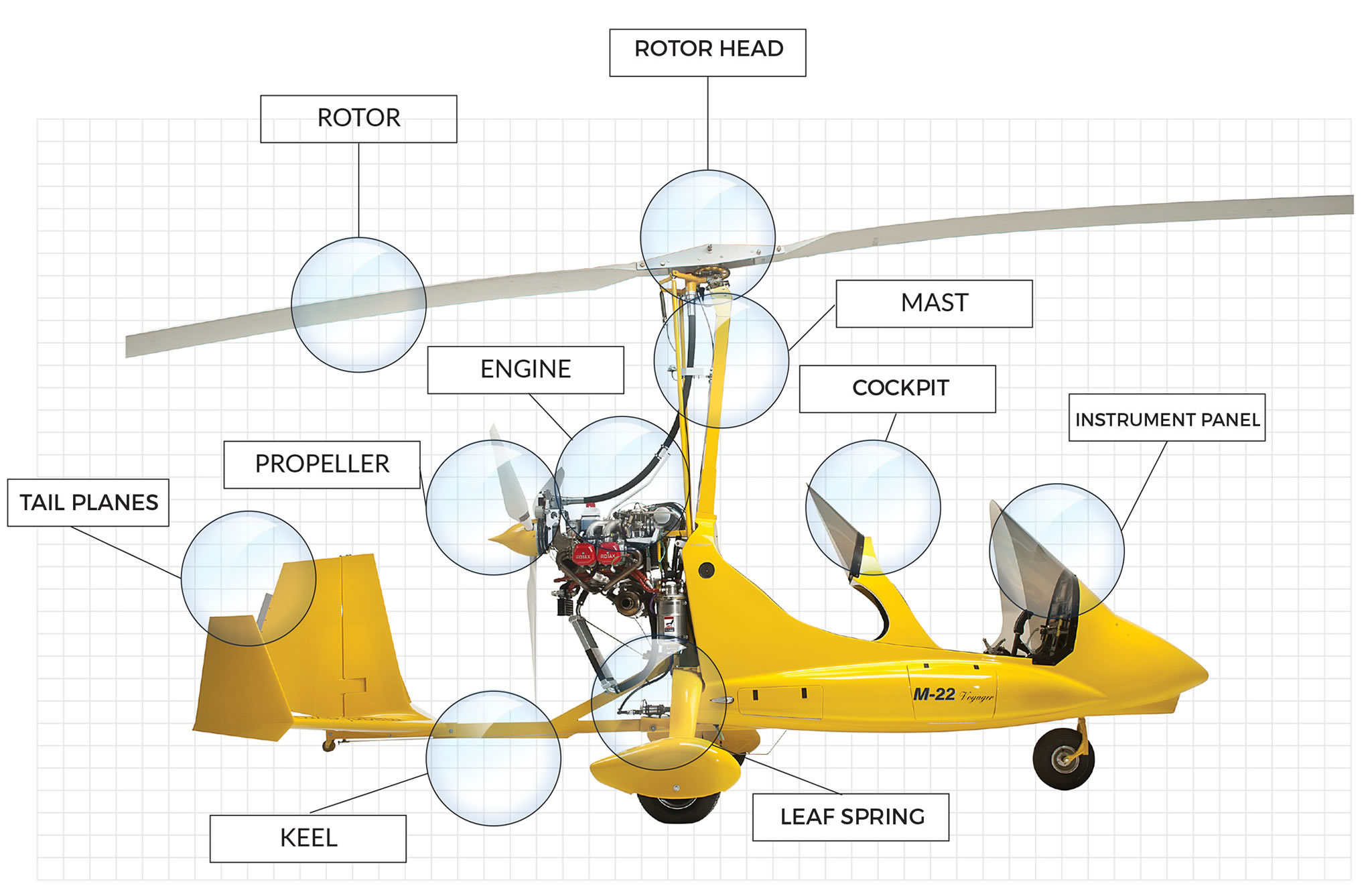DISCOVER THE GYROPLANE
The gyroplane is a unique aircraft, but still not a well-known one. It is one of the most versatile designs in aeronautics and, surely, the safest and most reliable ever built! The gyroplane belongs to the “rotor wing” category and generates lift from a self-rotating rotor; there is no power transmission to the rotor and the engine-driven propeller gives the push/traction force required for forward movement.
HISTORICAL OUTLINES
Where it comes from
Juan de la Cierva y Codorníu was a Spanish civil engineer, pilot and aeronautical engineer. His most famous achievement was the invention in 1920 of the Autogiro, a single-rotor type of aircraft. In 1923, La Cierva invented and created the first gyroplane. “La Cierva C4”: the first flying aircraft that cannot stall. January 9th. 1923 marked the first officially observed flight of an autogyro. The primary enemy of aviators was defeated. Until that time, rotary-wing aircraft designers failed because of a rolling moment (in other words, the tendency of the rotorcraft to roll over) regularly encountered when the aircraft began forward movement. The heart of the problem was due to the dissymmetry of lift (increase of lift of the advancing blade and decrease of lift of the retreating blade). Cierva’s successful design, the C4, introduced the articulated rotor; blades hinged and allowed to flap. The missing link was connected; it was possible to design successful rotating-wings!

THE MAGNI GYROPLANE

The main characteristics of our gyroplanes are their unsurpassed reliability and their unrivalled handling. These characteristics are derived from their “conceptual simplicity” leading to a relatively easy way to acquire necessary skill to fly them. Today's gyroplane is a modern aircraft design, using technologically advanced, high quality materials built to exacting aerospace standards. Flying a Magni gyroplane, even in adverse weather conditions, is always a pleasant experience. Thanks to the unique aerodynamic configuration of the rotor and tail planes, the flight attitude is always stable and allows for smooth flight in the most turbulent conditions.
The remarkable manoeuvrability in flight is matched by excellent manoeuvrability, even on the ground. The minimum turning radius of 5 meters and the limited overall size allow the gyro to be hangered in very small spaces. Its small size, low weight and the ease with which the rotor can be disassembled, allows for easy transportation on a trailer behind a car. Upon arrival to the airport the rotor can be installed in a matter of minutes. The blades, made of composite materials, are extremely robust and have a virtually unlimited life. Ease of handling, strength, and the almost total absence of vibration are the main features of our rotor system. Our gyros, thanks to the low weight and the engine power of just 115 HP, are integrated in a context of sustainable use, in total respect of the environment, with minimal consumption of unleaded fuel, and with a noise level below 65 dB.
GYROPLANE AND HELICOPTER: THE DIFFERENT TWINS

Gyroplanes and helicopters are both very charming and interesting rotorcraft. Furthermore, they are capable of different and specific manoeuvres and uses when compared with fixed-wing aircraft. Both gyros and helicopters receive the lift they need for flying from their rotating wing. This common characteristic [the rotor] makes it difficult for many people to see the difference between them as their appearance is similar to the untrained eye.

This confusion between the two kinds of rotorcraft has been increased by the low number of gyroplanes compared to helicopters. Even with the common characteristic of the rotor, it is amazing how many conceptual differences – even up to opposite airflow – there are between gyroplane rotors and helicopter rotors. Aerodynamic forces, stresses, angles of incidence and degrees of liberty are different, and obviously, flight performance and characteristics are different too. In gyroplanes, there is no power transmission to the rotor during flight; it is easy to see this: gyroplanes do not have anti-torque devices such as tail rotors to balance the torque from the main power-driven rotor. Lift is provided by autorotation driven by air flowing up through the blades. This condition is allowed by the degree of liberty of movement of the rotor head – and, subsequently, of the rotor disc – along its lateral axis; in the case of Magni gyroplanes, this range is from 0° (horizontally) to 18° towards the rear of the gyroplane. This range allows the correct passage of airflow in all allowed flight conditions within the gyroplane flight envelope. The pilot’s control of the lateral axis is provided by the use of the stick. Due to the lack power to the rotor, the gyroplane cannot keep stationary while hovering as helicopters can. In fact, when speed decreases with nose up attitude, the airflow through the rotor decreases, and rotor rpm also slowly but constantly decreases, causing a reduction in lift. When rotor rpm is under a certain level – this value varies due to weather conditions and the weight of the gyro – the gyro will start sinking steeply (2-4 m/s with engine; up to 10 m/s without engine) or vertically if the forward airspeed speed decays to zero. While descending the pilot maintains full control authority, and the rotor will be kept “fed” by the airflow generated by the sinking movement. Therefore, as soon as descent speed is enough, the rotor will keep a number of turns enough for a constant speed descent. It must be very clear that even if gyroplanes cannot stall as fixed-wing aircraft do, it is also impossible to maintain stationary hovering conditions for more than a few seconds. Within the gyroplane’s flight envelope, rotor rpm will self-stabilize on a value depending on the combined effect of load, type of manoeuvring and weather conditions. This makes piloting very easy! Considering again the specific range of Magni gyroplanes, the only power transmission system is the prerotator. This system is designed and only needed to spin-up the rotor to a minimum number of rpm to allow take-off. It is then disengaged, and is not used during the flight. It is possible to deduce that gyroplanes, even if capable of operating in narrow spaces, cannot take-off or land vertically as helicopters do. After prerotation has been disengaged, gyroplanes need a short take-off roll to get some acceleration. Always considering a specific range of gyroplanes, it is possible to quantify the needed space for a Magni Gyro ranges from 40 to 80 m for take-off and approx. 2-5 m for landing.












